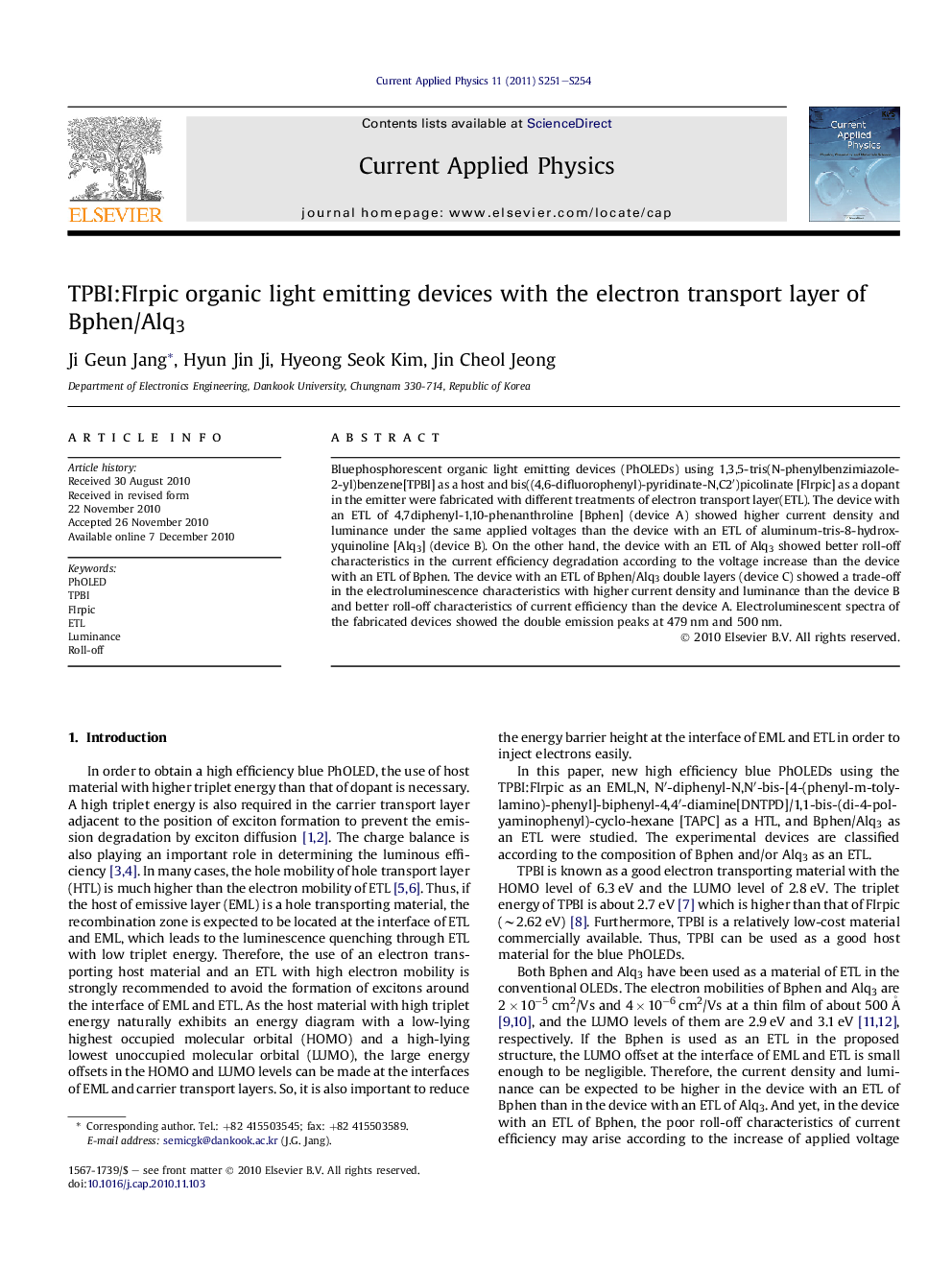| Article ID | Journal | Published Year | Pages | File Type |
|---|---|---|---|---|
| 1786934 | Current Applied Physics | 2011 | 4 Pages |
Bluephosphorescent organic light emitting devices (PhOLEDs) using 1,3,5-tris(N-phenylbenzimiazole-2-yl)benzene[TPBI] as a host and bis((4,6-difluorophenyl)-pyridinate-N,C2′)picolinate [FIrpic] as a dopant in the emitter were fabricated with different treatments of electron transport layer(ETL). The device with an ETL of 4,7diphenyl-1,10-phenanthroline [Bphen] (device A) showed higher current density and luminance under the same applied voltages than the device with an ETL of aluminum-tris-8-hydroxyquinoline [Alq3] (device B). On the other hand, the device with an ETL of Alq3 showed better roll-off characteristics in the current efficiency degradation according to the voltage increase than the device with an ETL of Bphen. The device with an ETL of Bphen/Alq3 double layers (device C) showed a trade-off in the electroluminescence characteristics with higher current density and luminance than the device B and better roll-off characteristics of current efficiency than the device A. Electroluminescent spectra of the fabricated devices showed the double emission peaks at 479 nm and 500 nm.
